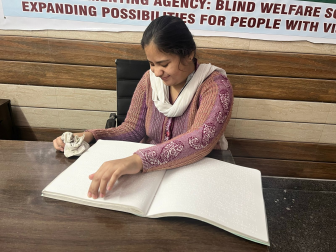Living with visual impairment presents unique challenges that extend beyond the immediate difficulty of navigating a world designed primarily for sighted individuals. While the primary focus often remains on the impairment itself, it is crucial to understand that visually impaired individuals are also susceptible to a range of common health issues, often exacerbated by their condition. This blog explores these health issues, shedding light on their prevalence, causes, and management strategies.
Prevalence and Causes: Visually impaired individuals frequently experience higher levels of mental health issues, such as depression and anxiety. The primary causes include social isolation, loss of independence, and the constant need to adapt to a sighted world. The emotional toll of living with a disability can be profound, leading to a higher prevalence of mental health conditions compared to the general population.
Management Strategies:
Prevalence and Causes: Limited physical activity, a common consequence of visual impairment, can lead to cardiovascular problems. Restricted mobility may reduce opportunities for exercise, leading to conditions such as hypertension and heart disease.
Management Strategies:
Prevalence and Causes: The sedentary lifestyle often associated with visual impairment contributes to obesity, which in turn increases the risk of diabetes. Difficulty in accessing nutritional information and preparing balanced meals can exacerbate this issue.
Management Strategies:
Prevalence and Causes: Poor posture, lack of physical exercise, and the physical strain of using mobility aids can lead to musculoskeletal problems such as back pain, arthritis, and repetitive strain injuries.
Management Strategies:
Prevalence and Causes: Visually impaired individuals, particularly those who are completely blind, often experience disruptions in their circadian rhythms, leading to sleep disorders. The absence of light cues disrupts the natural sleep-wake cycle.
Management Strategies:
Prevalence and Causes: Visually impaired individuals are at risk for various eye health issues, depending on the nature and cause of their impairment. Conditions such as glaucoma, cataracts, and retinal disorders require ongoing medical attention.
Management Strategies:
Understanding and addressing the common health issues among the visually impaired requires a holistic approach that encompasses physical, mental, and emotional well-being. By recognizing these challenges and implementing effective management strategies, we can improve the quality of life for visually impaired individuals. It is essential for healthcare providers, caregivers, and society at large to support and advocate for the health needs of this community, ensuring they receive comprehensive and accessible care.
By contributing to our feature donation campaigns, you are not just supporting us,
you are fostering independence, education, and accessibility for the people with blindness.
We are providing free shelter, food and educational support to the abandoned visually impaired girls residing at BWS.
₹1146562
raised of ₹2000000 Goal
57%
2 Days left
573 Supporters
Maa and Papa weren’t the happiest when I was born. They thought I was a burden to them.
₹768833
raised of ₹2000000 Goal
38%
2 Days left
589 Supporters
The Walking Canes have proved a useful tool to millions of blind people in navigating their environments with confidence and ease.
At our organization, we provide a nurturing environment for visually impaired girls, helping them lead fulfilling lives despite their challenges.
The following stories highlight the transformative journey of these remarkable individuals within our organization.

Hailing from Delhi, Sneha came to Blind Welfare Society in July 2023.
.jpeg)
Hailing from a small village of Gwalior district, Madhya Pradesh, Archana came to Blind Welfare Society in July 2023

Chhavi’s journey is a testament to the transformative power of education and the invaluable support provided by the Blind Welfare Society.